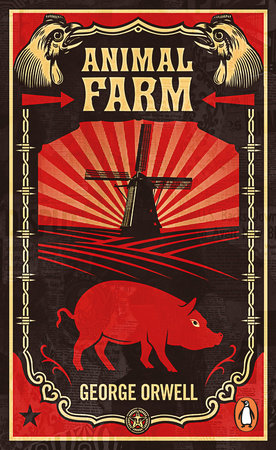Animal Farm is a fictional novel by George Orwell that was published in 1945. The story is about a group of farm animals trying to create an equal and just society in the farmland after rebelling against their human farmer for being a tyrant. The pigs of the farmland, as being the most intelligent kind of animal present, rise to power and become the leaders of the new farm. Throughout the story, the pigs become more and more tyrannical and manipulative, like taking more food to themselves and making the commandments they made not apply to themselves. By the end of the story, the pigs start behaving exactly like their old human farmer did and brought back their old farm with humans and pigs in charge.
The story revolved around the theme of authoritarian government injustice and how it can bring its citizens into poverty. The animals of the farmhouse had to suffer the consequences of allowing the pigs to get too much power over them. Of course, it was not the farmhouse animals’ faults, as they were manipulated by the intelligent pigs into thinking that if they don’t listen to them, then the humans will come and take the farm back from them. The pigs exploit the farm animals for their labor and gave them little in return. This is an example of how the differences of socioeconomic classes in a society can result in injustice for the inferior class.
Gayatri Spivak’s “Can the Subaltern Speak?” heavily relates to this story. Subalterns are described as fragmented groups of marginalized people that have no say or power of what’s going on. Subalterns are different from people who are oppressed, as not only are subalterns are oppressed, but they don’t have any access to the power system in the society. An example of this would be groups of people who are disenfranchised by their lack of education. This example exactly applies to Animal Farm because the pigs were the only animals on the farm that were educated, since they learned how to read and write all by themselves due to their heightened intelligence. The other animals were clueless and just did what they were told out of fear. The farmland animals, in this case, are the “subalterns” of the society since they have absolutely zero power due to their lack of education.



